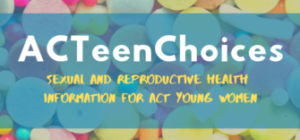Sexual violence
Violence is complicated. It can take many forms and is experienced in different ways, but it always involves the abuse of power and exercising coercion and control.
Sexual violence is often violence against women due various expressions of gender inequality outlined by Our Watch: Change the story, including:
- Condoning of violence against women
- Men’s control of decision-making and limits to women’s independence in public and private life
- Rigid gender roles and stereotyped constructions of masculinity and femininity
- Male peer relations that emphasise aggression and disrespect towards women.
What is sexual violence?
Sexual violence covers a wide range of unwanted sexual behaviours that can include:
- Sexual assault,
- Sexual abuse,
- Sexual exploitation,
- Sexual coercion,
- Being forced to watch or engage in porn,
- Forced prostitution,
- Human trafficking,
- Image sharing of a person without their consent,
- Female genital mutilation,
- Rape.
This violence can be perpetuated in a domestic relationship, former partners, casual partners, other people known to the victim-survivors, or strangers. It could happen to anyone, but women and girls, children and young people face the highest rate of experiencing sexual violence. It is important to remember that it is never your fault if you have been subjected to sexual violence. All forms of sexual violence are crimes in Australia and violence of any type is not OK.
What is sexual assault?
Sexual assault is any sexual contact without enthusiastic consent of the other person. It can include unwanted touching, fondling or kissing and it is not limited to sexual intercourse.
What is sexual harassment?
BBC 3: Is this sexual harassment? Men & women discuss
Sexual harassment behaviours by a person include:
- Knowing that the behaviour is unwanted or unwelcome; and
- Interferes with your’s life activities; or
- Leads to or implies work or study-related consequences for you.
These behaviours can be offensive, humiliating or intimidating, and can be direct or indirect, physical or verbal, repeated or one-off event.
On public transport this may include:
-
- staring or leering,
- deliberate brushing up against you or unwelcome touching,
- suggestive comments or jokes,
- insults or taunts,
- intrusive questions or statements about your private life,
- behaviours considered a criminal offence such as physical assault, indecent exposure, sexual assault, stalking or obscene communications.
BBC 3: Why sexual harassment is your fault? Fern Brady’s life lesson
What is dating violence?
Dating violence can be experienced as physical, emotional, verbal, technological or sexual abuse from an intimate partner. It can occur in all socioeconomic, racial, ethnic and religious backgrounds, and in same-sex relationships as well as heterosexual relationships. However, females are more likely to be at harm of dating violence than males, especially among preteens, teenagers and young adults.
What you can do
- Reach out and talk to someone you trust
- Report the violence
- Keep a record of evidence
- Keep telling
- Tell the police
Further information
1800RESPECT: Sexual assault and violence
What to Say: Get the facts
Our Watch: Understanding Violence – Facts and figures
Multicultural Centre for Women’s Health: Your body your choice
That’s not Cool: Speak up about unhealthy relationships
Check out this website for Q&A about textual harassment, clear communication, privacy problems, picture pressure, constant messaging, spreading rumours and supportive friends.
Office on Women’s Health: Dating violence and abuse
See this website to read about the signs of dating abuse, what is digital abuse, how does violence or abuse start, how common dating violence is, and consequences.
Love Dignity: What you & everyone else should know about dating abuse
Sex etc.: Abuse & violence
Childline: Abuse and safety
| Sexual abuse | Rape and sexual assault | Female circumcision, FGM, and cutting |
| Forced marriage | Getting though a tough time | Getting help |
Online peer support
Pandora’s Project: Support and resources for survivors of rape and sexual abuse
Childline Message Board: Sexual abuse
Childline Ask SAM: Abuse and safety
Support services
If you are experiencing a form of sexual violence and in immediate danger call 000.
Canberra Rape Crisis Centre (CRCC)
6247 2525, 7am – 1pm
131 444, After hours
Forensic & Medical Sexual Assault Care (FAMSAC)
6244 2185, 9am – 5pm
6244 2222, After hours
1800RESPECT
1800 737 732, 24 hours
Domestic Violence Crisis Service (DVCS)
6280 0900, 24 hours
Counselling for Aboriginal and Torres Strait Islander Survivors (Nguru)
6247 2525, 7am – 11pm
Qlife Counselling and Referral Service for people who are lesbian, gay, bisexual, trans and/or intersex
1800 184 527 or webchat, 3pm – midnight
Sources
Simon Fraser University – Sexual violence definitions
Respect Victoria: Respect women – call it out-active bystander


 Image by Nate Grigg: https://flic.kr/p/58MNGK (Creative Commons)
Image by Nate Grigg: https://flic.kr/p/58MNGK (Creative Commons)